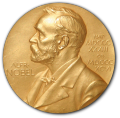
The Homer Addams Award is intended to encourage graduate student research and to perpetuate the memory of its namesake, who was president of the American Society of Heating and Air-Conditioning Engineers, an ASHRAE predecessor society.
Lima is recognized for his contributions to ASHRAE Research Project 1444, “Experimental Evaluation and Prediction of Two-Phase Pressure Drops and Flow Patterns in U-bends for R-134A and R-410A.” Through his research, he showed for the first time that it was possible to measure two-phase pressure drops effectively occurring in U-bends. Indeed, since the beginning of two-phase experimental science, two-phase pressure drops in U-bends have been measured using the single-phase methodology. That is, the U-bend pressure drops are calculated based on the total pressure drops in the system (U-bend and two straight tubes) and on the pressure drops in the straight tube (contiguous to the U-bend). His methodology provides measurements that are much more representative of the pressure drops effectively occurring in the U-bend. These are not influenced by the variation of the vapor quality and saturation temperature occurring elsewhere (straight tubes) in the test section, as opposed to the traditional method. Furthermore, this method provides much more accurate results.

